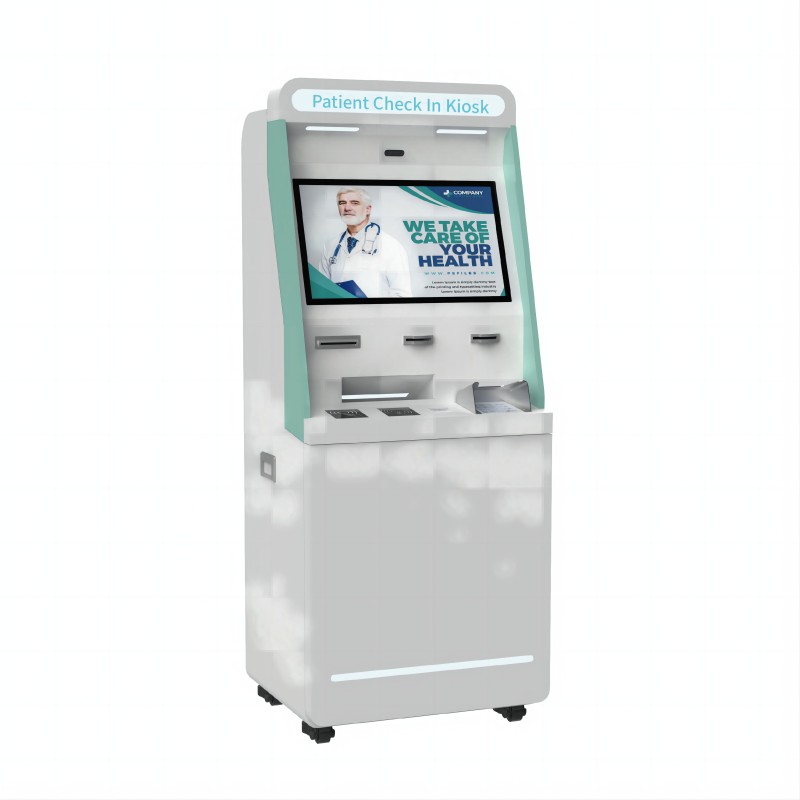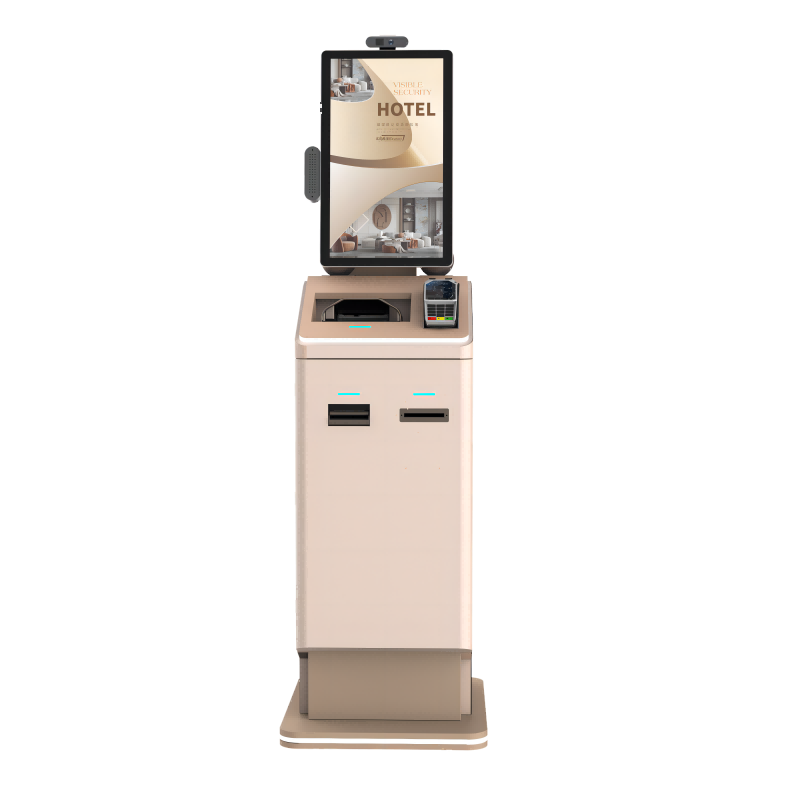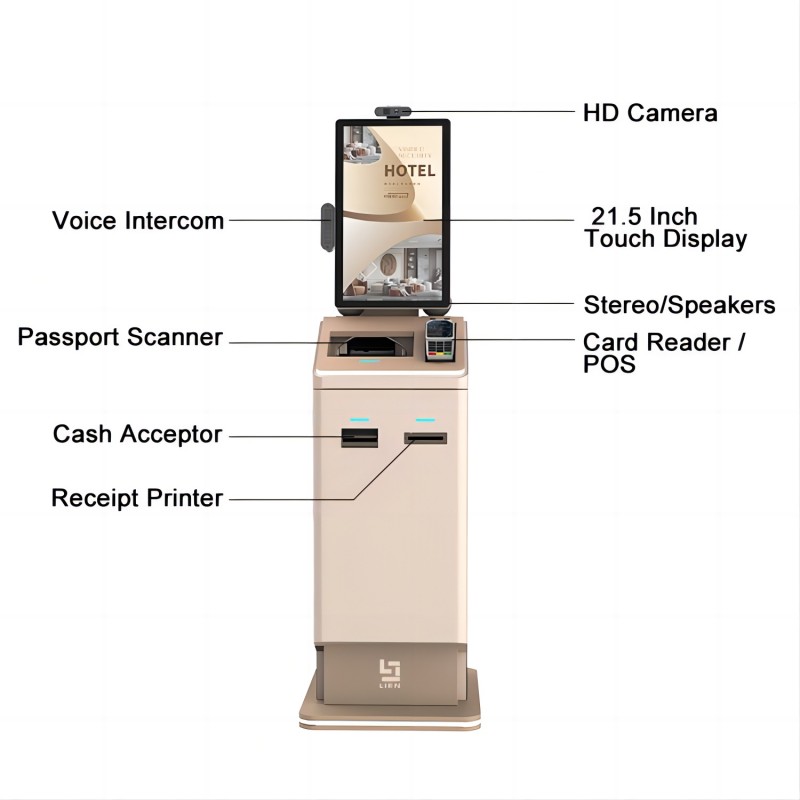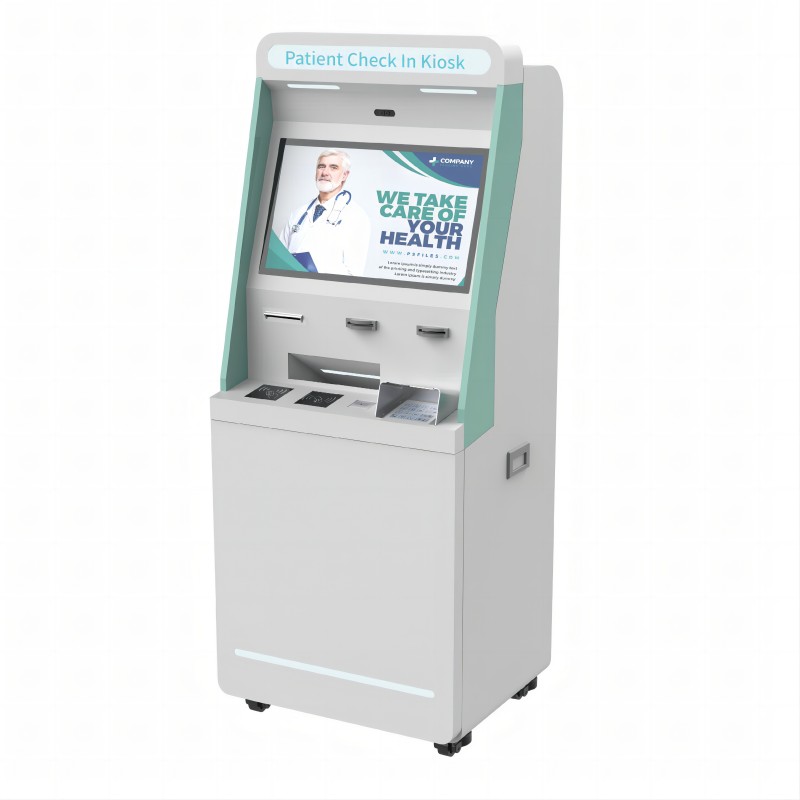Kiosk Computer Complete Components
| Kiosk Computer Manufacturing Process
|
Retail: Used for self-checkout, product information, and inventory management.
Healthcare: Facilitates patient check-in, information access, and appointment scheduling.
Hospitality: Allows guests to check-in, access services, and make reservations.
Banking: Enables users to perform transactions such as deposits, withdrawals, and account inquiries.
Transportation: Used for ticket purchasing, check-in, and wayfinding in airports, bus stations, and train stations.
Government: Helps with public services like renewing licenses, paying fines, and accessing information.
Education: Provides access to learning materials, course registration, and campus information.
Entertainment: Used for purchasing tickets, accessing information, and interactive displays in museums and theme parks.

Increased Efficiency: Automates routine tasks, reducing the need for staff and speeding up service delivery.
Enhanced User Experience: Provides an intuitive and interactive platform for users to access information or services quickly.
24/7 Availability: Operates continuously without the need for breaks, offering services around the clock.
Cost-Effective: Reduces operational costs by minimizing the need for human resources and streamlining processes.
Scalability: Easily deployable in multiple locations to meet growing business needs.
Data Collection: Gathers valuable user data for business analytics, helping improve services and customer targeting.
Branding Opportunities: Customizable interfaces and enclosures enhance brand visibility and customer engagement.
Security: Provides a secure environment for transactions and data handling, protecting both business and user information.

Start the Interface: Users approach the kiosk and begin by interacting with the touchscreen or other input device to start the session.
Navigate the Menu: The user follows on-screen instructions to navigate through the options, such as selecting services, entering information, or making choices.
Input Data: Users may input information via an on-screen keyboard, card reader, barcode scanner, or other peripherals.
Complete Transactions: For payment transactions, the user may swipe a card, use a mobile payment app, or insert cash, depending on the kiosk’s capabilities.
Receive Confirmation: After completing the task, the kiosk may print a receipt, display a confirmation screen, or provide other forms of acknowledgment.
End Session: The user can log out or end the session as indicated by the kiosk, ensuring that their data is secure and the kiosk is ready for the next user.
Support and Assistance: Some kiosks offer help buttons or call features to assist users who encounter difficulties.

Touchscreen Size: Choose different screen sizes based on the intended application and user interaction needs.
Enclosure Design: Customize the appearance and materials of the kiosk to align with branding and environmental conditions.
Input Devices: Add peripherals like card readers, barcode scanners, printers, or biometric scanners based on specific needs.
Software Interface: Design a user-friendly, branded interface that meets specific business objectives and user experience goals.
Connectivity Options: Select from various connectivity options, including Wi-Fi, Ethernet, or cellular, depending on installation location.
Security Features: Incorporate features like encrypted data storage, tamper-proof enclosures, and advanced authentication methods.
Mounting Solutions: Choose between floor-standing, wall-mounted, or countertop kiosks to fit space and operational requirements.
Multimedia Capabilities: Enhance the kiosk with speakers, cameras, or microphones for interactive and multimedia applications.

The cost of a kiosk computer varies based on customization, hardware, software, and additional features. Basic models may start around a few thousand dollars, while fully customized kiosks with advanced functionalities can cost significantly more.
Initial Cost: Includes the price of hardware, software development, installation, and any necessary customization. This also covers design, prototyping, and testing phases.
Operational Cost: Involves ongoing maintenance, software updates, power consumption, and potential repairs. These costs are typically lower than the initial investment.
Training and Support: Budgeting for training staff or users on how to operate the kiosk and for ongoing technical support.
Return on Investment (ROI): Kiosk computers often offer a high ROI by reducing labor costs, improving service efficiency, and increasing customer satisfaction. The ability to operate 24/7 without breaks means more transactions and interactions, boosting revenue.
Revenue Generation: Kiosk computers can directly generate income by handling transactions, upselling products, or serving ads. They can also indirectly increase revenue by improving customer satisfaction and streamlining processes.
Data Analytics: Kiosks can collect valuable data on customer behavior, helping businesses make informed decisions, optimize operations, and improve marketing strategies.
1.1 Determine the purpose of the kiosk (e.g., retail, information, transactions) and the environment in which it will be used (indoor, outdoor).
1.2 Define the key features required, such as touchscreen size, peripherals (card readers, printers), and connectivity options.
21. Establish a budget that includes the cost of the kiosk, customization, installation, and ongoing maintenance.
2.2 Consider both initial costs and long-term operational costs.
3.1 Look for reputable kiosk manufacturers or suppliers with experience in your industry.
3.2 Compare options based on quality, customization capabilities, customer support, and pricing.
3.3 Review case studies or testimonials to gauge vendor reliability and product performance.
4.1 Contact selected vendors to discuss your requirements and request a detailed proposal.
4.2 Ensure the proposal includes a breakdown of costs, timelines, and the scope of customization.
5.1 Assess the proposals based on your criteria, including cost, quality, and vendor experience.
5.2 If possible, request a demo or visit a location where the kiosks are in use to see them in action.
5.3 Evaluate the kiosk’s usability, interface, and overall design.
6.1 Once satisfied, negotiate terms and finalize the purchase.
6.2 Ensure the agreement includes installation, training, and post-purchase support.
6.3 Work with the vendor on any final customizations before the kiosk is delivered and installed.
7.1 Coordinate with the vendor for installation, ensuring it’s done properly and the kiosk is fully operational.
7.2Provide training for your staff or users on how to operate and troubleshoot the kiosk.
7.3 Monitor the kiosk's performance post-installation to ensure it meets your expectations.
What did our happy clients say?
This kiosk computer has streamlined our operations significantly. The user-friendly interface and reliable performance have greatly improved customer satisfaction. Highly recommended!
We’ve been using the kiosk computer for a few months now, and it has exceeded our expectations. Easy to customize, and the support team was fantastic throughout the process.
The kiosk computer has been a game-changer for our business. It’s durable, efficient, and has helped us reduce costs while enhancing customer experience. Very pleased with our purchase!
Installing this kiosk computer was the best decision we made. It’s intuitive, secure, and has helped us gather valuable data on customer interactions. Definitely worth the investment.